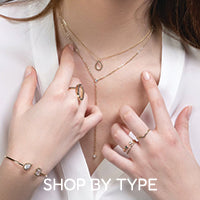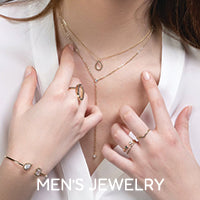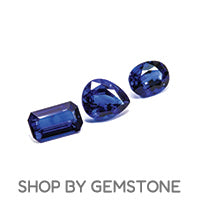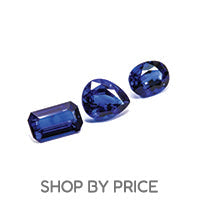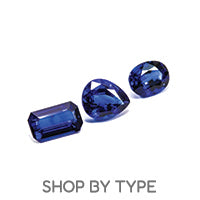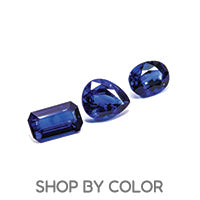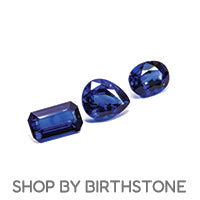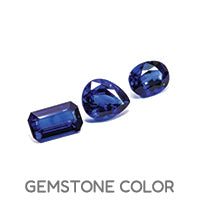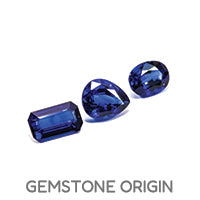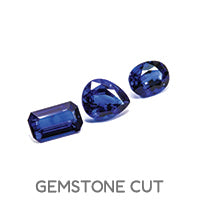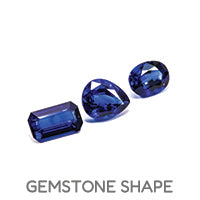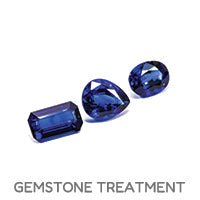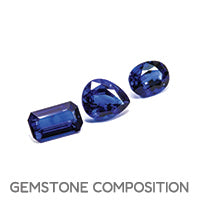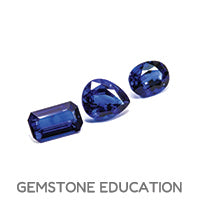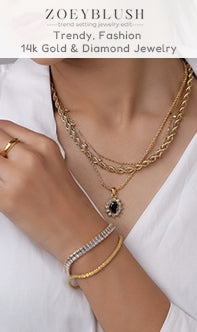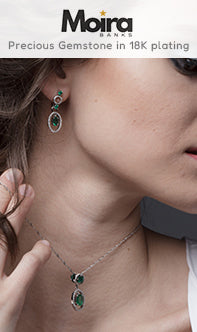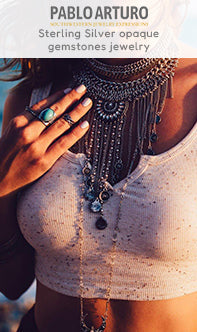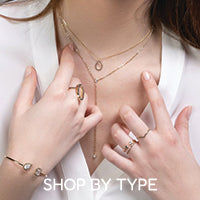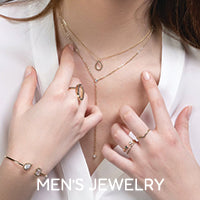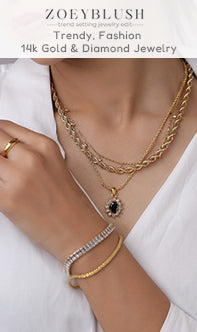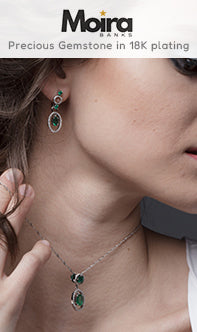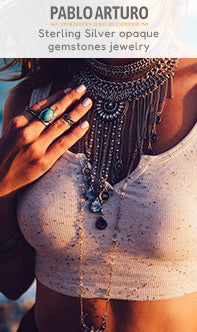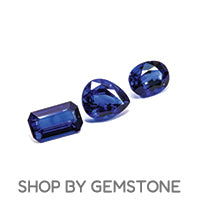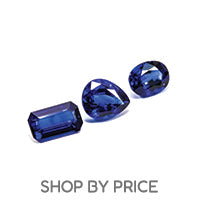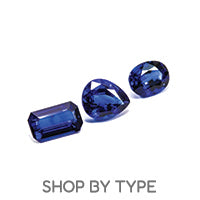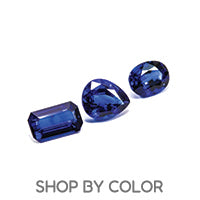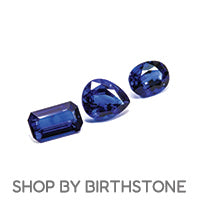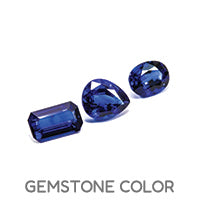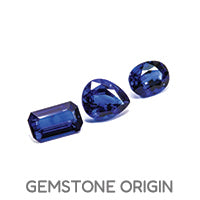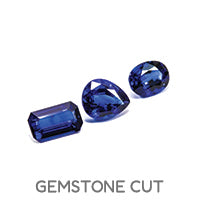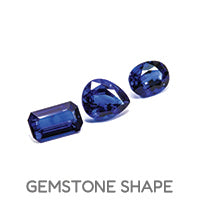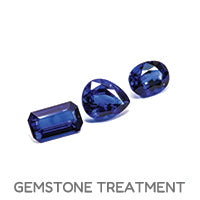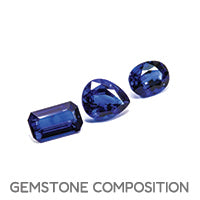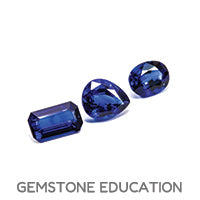What is Moissanite?
Moissanite, originally a rare natural mineral, is now more commonly recognized as a lab-created gemstone. Comprising silicon carbide, it is renowned for its brilliance and durability, often serving as a cost-effective alternative to diamonds in jewelry.
First discovered in 1893 by French scientist Henri Moissan in an Arizona meteorite crater, natural moissanite is exceptionally rare. Consequently, the vast majority of moissanite utilized in contemporary jewelry is produced in laboratories.
Lab-created moissanite shares numerous optical properties with natural diamonds, boasting exceptional sparkle and hardness. With a rating of 9.25 on the Mohs scale, it proves highly suitable for everyday wear. Its distinctive fire, characterized by the dispersion of light into spectral colors, further enhances its allure.
Valued for its ethical origins and affordability, moissanite has surged in popularity as a preferred choice for engagement rings and other exquisite jewelry pieces.
What are the properties of Moissanite?
The paramount qualities of a jewel encompass its beauty, durability, and rarity. Below, we delve into how a gem can embody these characteristics:
Beauty: Brilliance: Cutting designs play a crucial role in achieving the brilliance of a jewel, utilizing the jewel's refractive index. This is quantified by the amount of light entering the jewel and its subsequent reflection.
Fire: The combination of a jewel's dispersion and design results in the breaking of light rays into a spectrum of colors, measured by the quantity of colored flashes.
Luster: Luster refers to the amount of light that reflects from the surface of the jewel, contributing to its overall visual appeal.
Rarity: Rarity pertains to the availability of a jewel. In the case of Moissanite, naturally occurring quantities are so scarce that they are insufficient for commercial purposes.
Superior Heat Resistance: Moissanite possesses superior heat resistance properties compared to other jewels, making it a preferred choice for crafting fine jewelry.
Moissanite Clarity: Gemstone specialists meticulously analyze each Moissanite using a 10x jeweler's loupe to identify any inclusions that may impact its optical performance or pricing.
MOISSANITE Vs Diamond VS Lab-grown
Moissanite
Diamond
Lab-Grown
Durability gemstones are measured on the Mohs Scale of Hardness, which assesses a gem’s ability to withstand surface scratching.
On the Mohs scale, Moissanite gemstones are a 9.25 on the Mohs Scale of Hardness, so they are suitable for daily wear.
Diamonds are the hardest known mineral and receive a 10 on the Mohs Scale of Hardness. Because of this exceptional score, diamonds are very durable and ideal for daily wear. This contributes to their popularity as center gemstones in engagement rings.
Lab-grown diamonds also have the same famous Mohs hardness of 10. They're just as durable as natural diamonds, but they're a bit easier on your pocketbook.
Brilliance Refers to the appearance of light reflected from the interior of the gem.
Moissanites exhibit a different kind of brilliance than diamonds do, as their faceting pattern is different. the fiery, rainbow flashes emitted by moissanites are beloved by some, but others feel that moissanites heightened brilliance can create a “disco ball” effect, especially in sunlight. The bigger the moissanite, the more likely it is that the difference will be noticeable. Moissanite has a refractive index from 2.65 – 2.69, which is higher than a natural diamond.
A different type of brilliance is what makes it possible to distinguish a moissanite from a diamond. Diamonds reflect light in three different ways. the white light reflected back is referred to as brilliance, while the rainbow of colors refracted through the diamond is referred to as dispersion. The surface sparkle of a diamond, known as scintillation, is a third type of diamond light return. the combination of these three gives diamonds their famous sparkle.
Brilliance refers to the captivating play of light within lab-created diamonds, creating both white light reflection (brilliance) and a spectrum of colors (dispersion). Surface sparkle, known as scintillation, completes the trio, defining the radiant allure that distinguishes lab-created diamonds.
Color is the natural color or lack of color visible within a gemstone.
While moissanites are labeled as “colorless”, the gems can still project a yellow or grayish hue in certain lights. Here again, the larger the moissanite, the more noticeable the color.
A colorless diamond, whether natural or lab created, has a natural body color that contains no traces of yellow, brown, or grey, resulting in a dazzling, bright white appearance.
These diamonds are created in a lab setting in traditional white color. They are also more eco-friendly and often more affordable than natural diamonds. Lab-grown diamonds can indeed have color, just like natural diamonds.
Price
For the same size from the top view, moissanites are dramatically lower in pricing than diamonds of that size. Moissanite gems typically vary in price only based on size and whether the stone is Premium or Super Premium.
Natural diamonds prices vary based on shape, carat, cut, color, and clarity.
Lab-grown diamonds have surged in popularity recently, offering a more affordable alternative to natural diamonds.
Sourcing
Known for its brilliance, moissanite is either found in trace amounts naturally or synthesized in labs, providing an eco-friendly choice for stunning jewelry.
Mined from the Earth's mantle, natural diamonds undergo ethical sourcing practices, ensuring the well-being of communities and ecosystems.
Created in controlled environments, lab-grown diamonds offer a sustainable alternative to traditional mining, with identical properties to natural diamonds.
| Moissanite | Diamond | Lab-Grown | |
|---|---|---|---|
| Durability gemstones are measured on the Mohs Scale of Hardness, which assesses a gem’s ability to withstand surface scratching. | On the Mohs scale, Moissanite gemstones are a 9.25 on the Mohs Scale of Hardness, so they are suitable for daily wear. | Diamonds are the hardest known mineral and receive a 10 on the Mohs Scale of Hardness. Because of this exceptional score, diamonds are very durable and ideal for daily wear. This contributes to their popularity as center gemstones in engagement rings. | Lab-grown diamonds also have the same famous Mohs hardness of 10. They're just as durable as natural diamonds, but they're a bit easier on your pocketbook. |
| Brilliance Refers to the appearance of light reflected from the interior of the gem. | Moissanites exhibit a different kind of brilliance than diamonds do, as their faceting pattern is different. the fiery, rainbow flashes emitted by moissanites are beloved by some, but others feel that moissanites heightened brilliance can create a “disco ball” effect, especially in sunlight. The bigger the moissanite, the more likely it is that the difference will be noticeable. Moissanite has a refractive index from 2.65 – 2.69, which is higher than a natural diamond. | A different type of brilliance is what makes it possible to distinguish a moissanite from a diamond. Diamonds reflect light in three different ways. the white light reflected back is referred to as brilliance, while the rainbow of colors refracted through the diamond is referred to as dispersion. The surface sparkle of a diamond, known as scintillation, is a third type of diamond light return. the combination of these three gives diamonds their famous sparkle. | Brilliance refers to the captivating play of light within lab-created diamonds, creating both white light reflection (brilliance) and a spectrum of colors (dispersion). Surface sparkle, known as scintillation, completes the trio, defining the radiant allure that distinguishes lab-created diamonds. |
| Color is the natural color or lack of color visible within a gemstone. | While moissanites are labeled as “colorless”, the gems can still project a yellow or grayish hue in certain lights. Here again, the larger the moissanite, the more noticeable the color. | A colorless diamond, whether natural or lab created, has a natural body color that contains no traces of yellow, brown, or grey, resulting in a dazzling, bright white appearance. | These diamonds are created in a lab setting in traditional white color. They are also more eco-friendly and often more affordable than natural diamonds. Lab-grown diamonds can indeed have color, just like natural diamonds. |
| Price | For the same size from the top view, moissanites are dramatically lower in pricing than diamonds of that size. Moissanite gems typically vary in price only based on size and whether the stone is Premium or Super Premium. | Natural diamonds prices vary based on shape, carat, cut, color, and clarity. | Lab-grown diamonds have surged in popularity recently, offering a more affordable alternative to natural diamonds. |
| Sourcing | Known for its brilliance, moissanite is either found in trace amounts naturally or synthesized in labs, providing an eco-friendly choice for stunning jewelry. | Mined from the Earth's mantle, natural diamonds undergo ethical sourcing practices, ensuring the well-being of communities and ecosystems. | Created in controlled environments, lab-grown diamonds offer a sustainable alternative to traditional mining, with identical properties to natural diamonds. |
Shop Our BellaMoi Moissanite Collection
Moissanite Cleaning & Care Guide
To maintain the stunning brilliance of Moissanites, it's essential to give them the proper care they deserve. A spotless Moissanite enables optimal reflection of light, allowing its dazzling fire and brilliance to be showcased. This amplified luminosity creates an illusion of a larger stone, in contrast to a dull one caused by the accumulation of skin oils, cosmetic products, and the residue of everyday activities. Here are four simple techniques to keep your Moissanite gemstones looking their best:
1. The Detergent Bath: Soak in mild soapy water, gently brush, rinse, and dry with a hair dryer.
2. Cold Water Soak: Create a solution with water and cleaning product (3/4 water, 1/4 cleaner), soak for 10 minutes, scrub gently, rinse with warm water, and dry with a blow dryer.
3. Commercial Jewelry Cleaners: Use non-toxic liquid jewelry cleaners designed for gemstones.
4. Ultrasonic Cleaner: High-frequency turbulence cleaner is highly effective for Moissanite care.
5. Additional Recommendations: Avoid wearing during sports or rough activities, and store individually to prevent scratches and damage.


